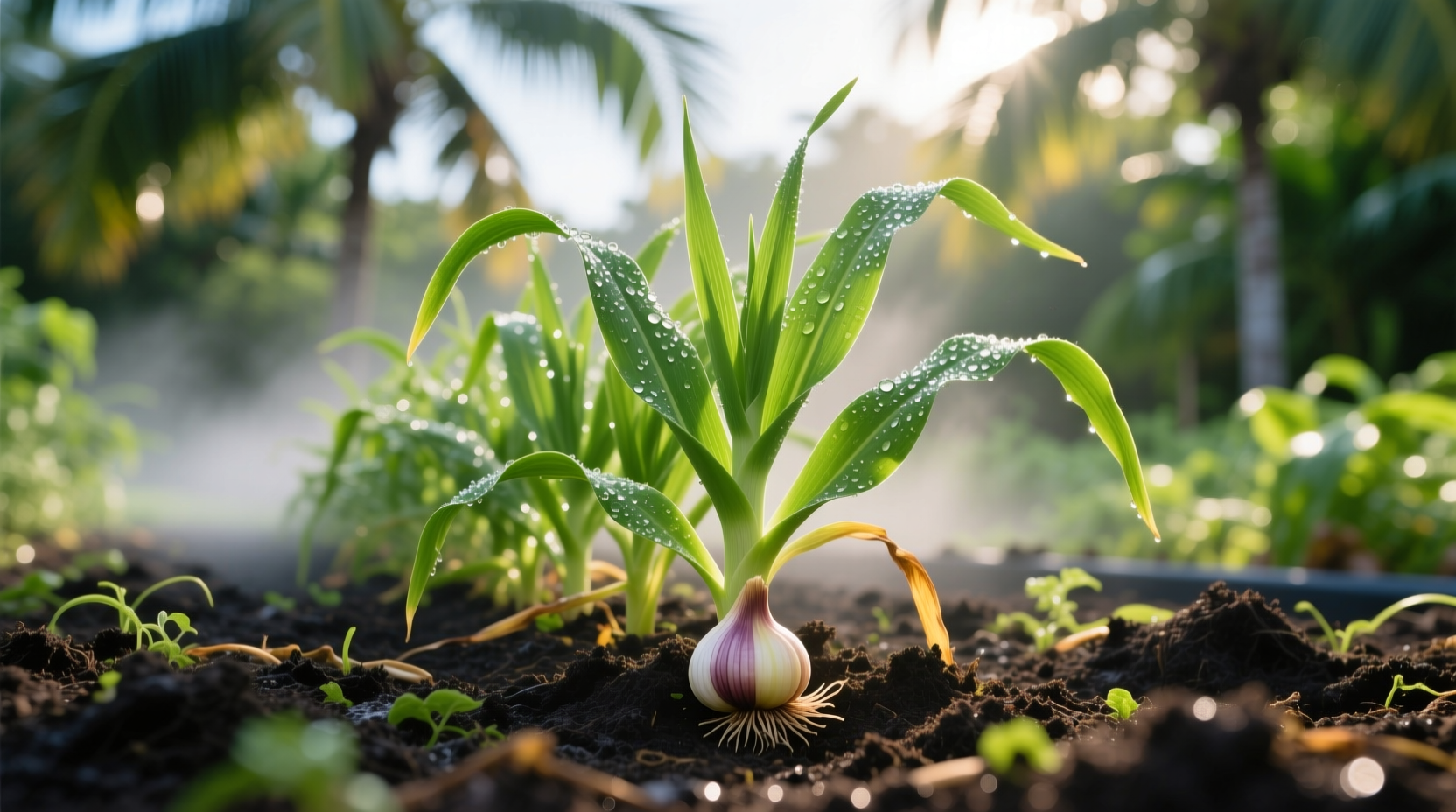Grow garlic successfully in Florida's warm climate by planting softneck varieties like Inchelium Red or California Early between November and January. Unlike northern growers, Florida gardeners must plant during the coolest months, amend sandy soil with compost, and harvest in April-May when 1/3 of leaves turn brown. Florida's mild winters require special attention to vernalization needs and disease prevention in humid conditions.
Florida gardeners face unique challenges when growing garlic due to our subtropical climate. While most garlic guides target northern growers with cold winters, successful Florida garlic cultivation requires different timing, varieties, and techniques. Forget everything you've heard about fall planting—here's your complete, science-backed guide to growing plump, flavorful garlic bulbs right here in the Sunshine State.
Why Florida Garlic Growing Requires Special Approach
Most gardening resources don't address Florida's unique conditions. Our mild winters don't provide the extended cold period (vernalization) that traditional garlic varieties need to form proper bulbs. The University of Florida IFAS Extension confirms that garlic requires 4-8 weeks below 40°F to initiate bulb formation—a condition rarely met in most of Florida.
| Factor | Typical Garlic Regions | Florida Conditions |
|---|---|---|
| Planting Time | September-October | November-January |
| Winter Temperatures | Consistently below freezing | Rarely below 40°F |
| Best Varieties | Hardneck types | Softneck varieties |
| Harvest Time | July-August | April-May |
Your Florida Garlic Growing Timeline
Follow this season-specific schedule for best results across Florida's diverse climate zones:
- October: Prepare soil by mixing 3-4 inches of compost into planting beds
- November-January: Plant cloves (soonest in North Florida, latest in South)
- February-March: Monitor growth and apply nitrogen fertilizer when 4" tall
- April: Watch for harvest signs as lower leaves turn brown
- May: Complete harvest before summer heat arrives

Top 3 Garlic Varieties That Actually Work in Florida
Choosing the right variety makes or breaks your Florida garlic crop. Based on University of Florida trials, these softneck varieties consistently perform best:
- Inchelium Red: Excellent flavor, stores well (9-12 months), adapts to warm winters
- California Early: Reliable producer in Central Florida, medium-hot flavor
- Silver Rose: Performs well in South Florida's mild winters, beautiful pink wrappers
Avoid hardneck varieties like Rocambole or Porcelain unless you're in the Panhandle. These require more winter chill than most of Florida provides and typically produce small, single-cloved "rounds" instead of proper bulbs.
Florida-Specific Soil Preparation Guide
Florida's sandy soil presents both opportunities and challenges for garlic growers. The good news? Excellent drainage prevents bulb rot. The challenge? Nutrients wash away quickly.
Follow these soil preparation steps for optimal garlic growth:
- Mix 3-4 inches of high-quality compost into your planting bed
- Add 1 pound of 10-10-10 fertilizer per 100 square feet before planting
- Maintain pH between 6.0-7.0 (test your soil first)
- Create raised beds 6-8 inches high for better drainage in heavy rain
For container growing (ideal for South Florida gardeners), use a mix of 60% potting soil, 30% compost, and 10% perlite. Containers give you better control over soil conditions and make it easier to protect plants during unexpected cold snaps.
Planting Techniques That Work for Florida Gardeners
Proper planting technique significantly impacts your garlic's success in Florida's climate:
- Plant individual cloves (not whole bulbs) with pointed end up
- Space cloves 4-6 inches apart in rows 12-18 inches apart
- Plant 2 inches deep in sandy soil, 1.5 inches in heavier soils
- Apply 2-3 inches of mulch (straw or pine needles) after planting
- Water thoroughly after planting, then only when top inch of soil dries
For gardeners in USDA zones 9b-11 (most of South Florida), consider the "refrigeration method" to simulate winter chill: store cloves in the refrigerator for 4-6 weeks before planting to improve bulb formation.
Watering and Fertilizing for Maximum Bulb Development
Florida's rainfall patterns require careful water management for garlic:
- Water regularly during dry periods in winter (December-February)
- Reduce watering in March as bulbs begin forming
- Stop watering completely 2-3 weeks before harvest
- Apply nitrogen fertilizer when plants reach 4" tall (March)
- Avoid high-nitrogen fertilizers after March to prevent excessive leaf growth
During Florida's rainy season (June-October), ensure excellent drainage to prevent bulb rot. Raised beds and container growing significantly improve success rates in areas with heavy spring rains.
Harvesting and Curing Garlic in Florida's Humid Climate
Timing your harvest correctly is crucial in Florida's early summer heat:
- Harvest when 1/3 of leaves turn brown (typically April-May)
- Dig carefully with a garden fork to avoid damaging bulbs
- Cure in a shaded, well-ventilated area for 2-3 weeks
- Brush off soil but don't wash bulbs before curing
- Store cured garlic in mesh bags in a cool, dry place
Florida's humidity makes proper curing essential. The University of Florida recommends curing garlic at 75-85°F with good air circulation. Avoid curing in garages or sheds that get too hot, as temperatures above 90°F can cause sprouting.
Troubleshooting Common Florida Garlic Problems
Address these frequent issues specific to Florida growing conditions:
- Small bulbs: Usually caused by late planting or insufficient cold exposure
- Yellowing leaves: Could indicate nematode infestation common in warm soils
- Mold on bulbs: Result of poor drainage or harvesting too late in rainy season
- No bulb formation: Variety not suited to Florida's mild winters
For organic pest control, rotate garlic with non-allium crops annually and plant marigolds as companion plants to deter nematodes. Remove any diseased plants immediately to prevent spread.
Florida Regional Growing Tips
Adjust your approach based on your specific Florida region:
- North Florida (Zones 8a-8b): Plant October-November, can grow some hardneck varieties
- Central Florida (Zones 9a-9b): Plant November-December, stick with softnecks
- South Florida (Zones 10a-11): Plant December-January, consider refrigeration method
Gardeners in coastal areas should plant slightly later than inland gardeners, as coastal regions stay warmer longer into winter. Always check your specific USDA hardiness zone for precise timing.











 浙公网安备
33010002000092号
浙公网安备
33010002000092号 浙B2-20120091-4
浙B2-20120091-4